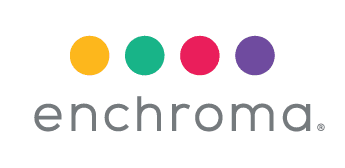Our primary goal is to see every person with color blindness reach their full potential. This is especially true for children.
Though seemingly basic, the understanding of color plays a significant role in a child’s development as a student. From learning shapes (“Find the red square”) and learning math (“How many red fish are there?”) to things like identifying uniform colors in sports and beyond, an understanding of color is integral to most students’ learning experience.
Additional problems arise from the general lack of color-blind accessibility in educational tools. Learn how color blindness can affect the classroom. Graphs in textbooks often use colors to delineate data while increasingly visual tools, particularly those evolving from the traditional overhead projector, depend on the need for normal color vision. The lack of accessibility for color blind students leads to an uneven playing field for those disadvantaged by color blindness. Students tend to develop coping methods to work around their color blindness, but such methods can slow students down and still hinder them from taking in as much knowledge as other normal sighted students.
While children are remarkably adaptable and can learn work-around solutions to manage their color vision deficiency, much more can be done to make learning less of a struggle. We can’t rely on kids to speak up. They are not self-advocates, and without nationally regulated color blind testing many kids might not understand that their world is colored differently. Problems understanding color are often taken as shortcomings on the part of the student, which can lead to confidence issues that last far longer than just in elementary school. We provide an online color blind test that identifies the type and level of color blindness.
For the first time, thousands of Roanoke City school children were tested for color blindness this school year. Watch the video here.
At EnChroma, we believe there is a need for increased parity in solutions for color blindness in the classroom. Our outdoor and indoor glasses for color blindness are specifically sized for small faces and can help kids build color confidence from an early age.
Corey, a 12-year-old, Utah middle school student said of his EnChroma color blind glasses

We want to promote a color-blind approach in education, helping students around the world compete in an increasingly colorful classroom. By giving students the tools to learn at the same pace as the normally sighted kids, we aim to reduce the amount of difficulty that students encounter in their educational journey. All students deserve a colorful education and it’s our goal to help get them there!


EnChroma continues to develop lens technology solutions for color blindness for inside and outside of the classroom for kids and adults of all ages.


Share your story and join the #EnChroma community!




